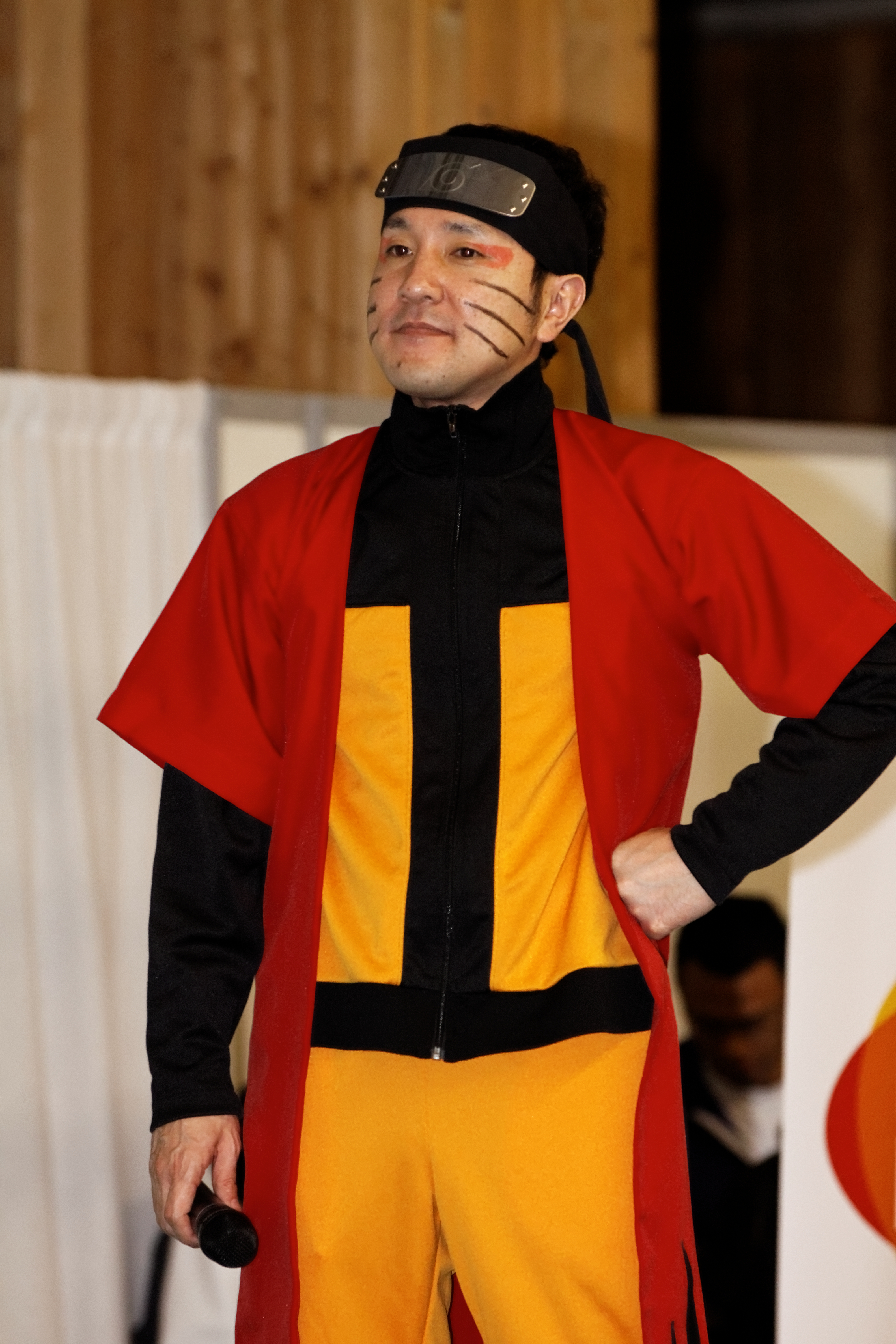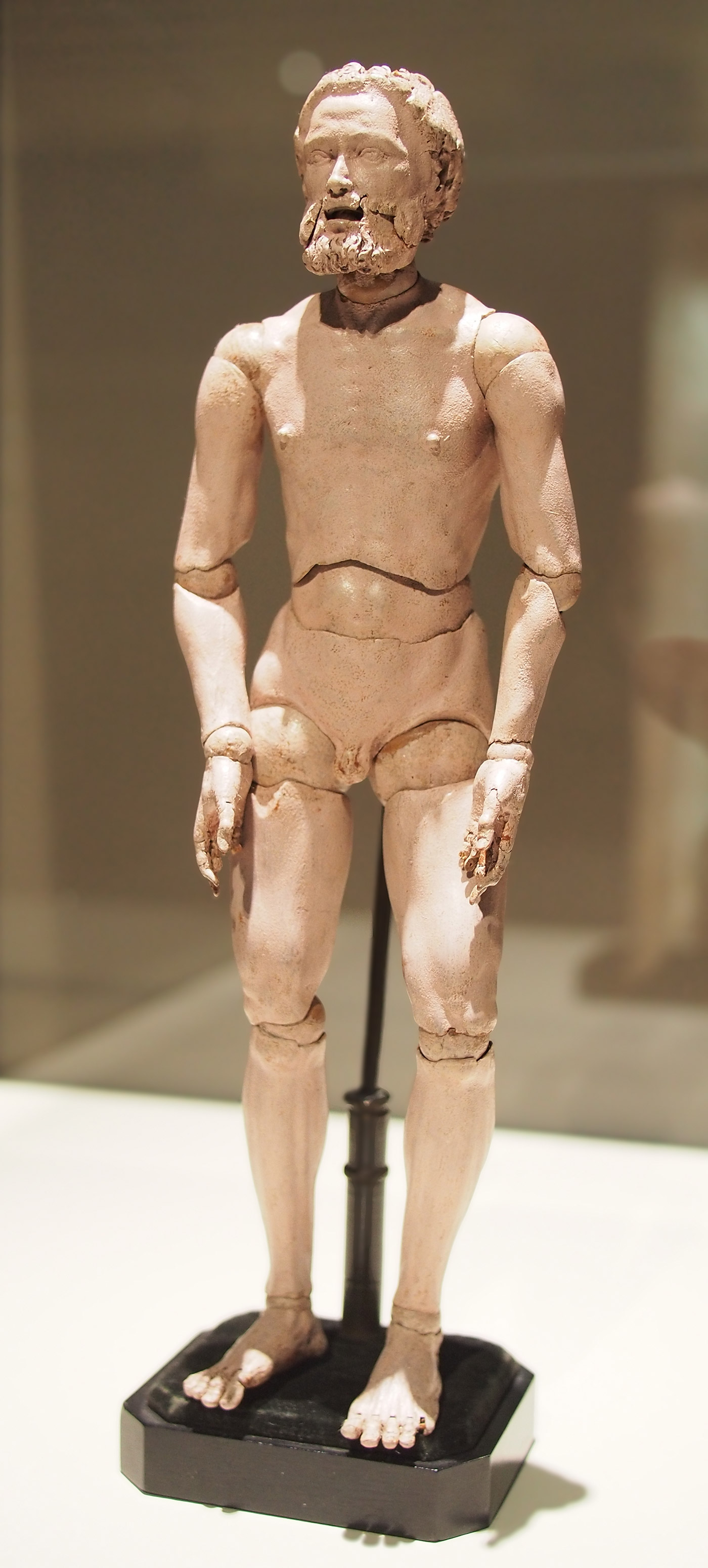|
Naruto Uzumaki
() is the titular protagonist of the manga ''Naruto'', created by Masashi Kishimoto. As the series progresses, he is a young ninja from the fictional village of Konohagakure (Hidden Leaf Village). The villagers ridicule and ostracize Naruto on account of the Nine-Tailed Demon Fox—a malevolent creature that attacked Konohagakure—that was sealed away in Naruto's body. Despite this, he aspires to become his village's leader, the Hokage, in order to receive their approval. His carefree, optimistic, and boisterous personality enables him to befriend other Konohagakure ninja, as well as a ninja from other villages. Naruto appears in the series' films and in other media related to the franchise, including video games and original video animations (OVA), as well as the sequel '' Boruto: Naruto Next Generations'', where he is the Hokage, and his son, Boruto Uzumaki, is the protagonist. When creating Naruto for the initial part of the series, Kishimoto kept the character "simple and ... [...More Info...] [...Related Items...] OR: [Wikipedia] [Google] [Baidu] |
Naruto
''Naruto'' is a Japanese manga series written and illustrated by Masashi Kishimoto. It tells the story of Naruto Uzumaki, a young ninja who seeks recognition from his peers and dreams of becoming the Hokage, the leader of his village. The story is told in two parts – the first set in Naruto's pre-teen years, and the second in his teens. The series is based on two one-shot manga by Kishimoto: ''Karakuri'' (1995), which earned Kishimoto an honorable mention in Shueisha's monthly ''Hop Step Award'' the following year, and ''Naruto'' (1997). ''Naruto'' was serialized in Shueisha's magazine, ''Weekly Shōnen Jump'' from 1999 to 2014, and released in ''tankōbon'' (book) form in 72 volumes. The manga was adapted into an anime television series produced by Pierrot and Aniplex, which broadcast 220 episodes in Japan from 2002 to 2007; the English dub of the series aired on Cartoon Network and YTV from 2005 to 2009. '' Naruto: Shippuden'', a sequel to the original series, p ... [...More Info...] [...Related Items...] OR: [Wikipedia] [Google] [Baidu] |
Manga
Manga ( Japanese: 漫画 ) are comics or graphic novels originating from Japan. Most manga conform to a style developed in Japan in the late 19th century, and the form has a long prehistory in earlier Japanese art. The term ''manga'' is used in Japan to refer to both comics and cartooning. Outside of Japan, the word is typically used to refer to comics originally published in the country. In Japan, people of all ages and walks of life read manga. The medium includes works in a broad range of genres: action, adventure, business and commerce, comedy, detective, drama, historical, horror, mystery, romance, science fiction and fantasy, erotica ('' hentai'' and '' ecchi''), sports and games, and suspense, among others. Many manga are translated into other languages. Since the 1950s, manga has become an increasingly major part of the Japanese publishing industry. By 1995, the manga market in Japan was valued at (), with annual sales of 1.9billion manga books a ... [...More Info...] [...Related Items...] OR: [Wikipedia] [Google] [Baidu] |
Dragon Ball
is a Japanese media franchise created by Akira Toriyama in 1984. The Dragon Ball (manga), initial manga, written and illustrated by Toriyama, was serialized in ''Weekly Shōnen Jump'' from 1984 to 1995, with the 519 individual chapters collected into 42 ''tankōbon'' volumes by its publisher Shueisha. ''Dragon Ball'' was originally inspired by the classical 16th-century Chinese novel ''Journey to the West'', combined with elements of Hong Kong martial arts films. The series follows the adventures of protagonist Goku, Son Goku from his childhood through adulthood as he trains in martial arts. He spends his childhood far from civilization until he meets a teen girl named Bulma, who encourages him to join her quest in exploring the world in search of the seven orbs known as the Dragon Balls, which summon a wish-granting dragon when gathered. Along his journey, Goku makes several other friends, becomes a family man, discovers his alien heritage, and battles a wide variety of villa ... [...More Info...] [...Related Items...] OR: [Wikipedia] [Google] [Baidu] |
Goku
Son Goku is a fictional character and the main protagonist of the ''Dragon Ball'' manga series created by Akira Toriyama. He is based on Sun Wukong (known as Son Goku in Japan and Monkey King in the West), a main character of the classic Chinese novel ''Journey to the West'' (16th century), combined with influences from the Hong Kong martial arts films of Jackie Chan and Bruce Lee. Goku first made his debut in the first ''Dragon Ball'' chapter, ''Bulma and Son Goku'', originally published in Japan's ''Weekly Shōnen Jump'' magazine on December 3, 1984. Goku is introduced as an eccentric, monkey-tailed boy who practices martial arts and possesses superhuman strength. He meets Bulma and joins her on a journey to find the seven wish-granting Dragon Balls. Along the way, he finds new friends who follow him on his journey to become a stronger fighter. As Goku grows up, he becomes the Earth's mightiest warrior and battles a wide variety of villains with the help of his friends and f ... [...More Info...] [...Related Items...] OR: [Wikipedia] [Google] [Baidu] |
Jump Square
, also written as , is a Japanese monthly '' shōnen'' manga magazine. Published by Shueisha, the magazine premiered on November 2, 2007 as a replacement for ''Monthly Shōnen Jump'', another manga anthology that Shueisha discontinued in June of that year. The magazine is a part of the ''Jump'' line of magazines. The manga titles serialized in the magazine are also published in ''tankōbon'' volumes under the '' Jump Comics SQ.'' imprint. Shueisha reported from their sales pole that readers of ''Jump Square'' tend to range from 15 to 34 years of age. The current (2015) editor-in-chief is Kôsuke Yahagi. History ''Jump SQ'', also called ''Jump Square'', was created as the replacement for Shueisha's canceled ''Monthly Shōnen Jump'' manga anthology. The title has three stated meanings: public square ("a plaza where comic lovers and talented artists and writers come together"), algebraic square (''Weekly Shōnen Jump''²), and "SQ = Supreme Quality" (referring to its "Supreme Qual ... [...More Info...] [...Related Items...] OR: [Wikipedia] [Google] [Baidu] |
Sakura Haruno
is a fictional character in the '' Naruto'' manga and anime series created by Masashi Kishimoto. Sakura is depicted as a kunoichi affiliated with and a part of Team 7, which consists of herself, Naruto Uzumaki, Sasuke Uchiha, and their '' sensei'' Kakashi Hatake. Sakura initially has an infatuation for Sasuke, praising him at every juncture, and heaps scorn upon the less-skilled teammate Naruto. Over the course of the series, she begins to shed this singularly driven persona and grows more appreciative and accepting of Naruto. Besides the main series, Sakura has appeared in several pieces of the ''Naruto'' media, most notably the spin-off '' Naruto: The Seventh Hokage and the Scarlet Spring'' (2015) and the sequel '' Boruto: Naruto Next Generations'' (2016) where she is portrayed as a doctor named . Sakura has become the series' female lead, although she was not immediately intended for the role. Kishimoto had difficulty drawing her character, resulting in Kishimoto inadver ... [...More Info...] [...Related Items...] OR: [Wikipedia] [Google] [Baidu] |
Sasuke Uchiha
() is a fictional character in the ''Naruto'' manga and anime franchise created by Masashi Kishimoto. Sasuke belongs to the Uchiha clan, a notorious ninja family, and one of the most powerful, allied with . Most of its members were massacred by Sasuke's older brother, Itachi Uchiha, before the series began, leaving Sasuke one of the few living. Despite becoming empathetic toward his teammates Naruto Uzumaki and Sakura Haruno, Sasuke's feelings of powerlessness force him to abandon his friends and his home in his quest to become stronger, and to find Orochimaru. Sasuke appears in several of the series' animated feature films and related media, including video games, original video animations ( OVAs), and '' Boruto: Naruto the Movie'' (2015) and its manga sequel, '' Boruto: Naruto Next Generations'' (2016), in which he is depicted as a vigilante supporting his village and a mentor to Naruto's son Boruto Uzumaki. Kishimoto conceived Sasuke as a rival of the series' title ch ... [...More Info...] [...Related Items...] OR: [Wikipedia] [Google] [Baidu] |
Shueisha
(lit. "Gathering of Intellect Publishing Co., Ltd.") is a Japanese company headquartered in Chiyoda, Tokyo, Japan. The company was established in 1925 as the entertainment-related publishing division of Japanese publisher Shogakukan. The following year, Shueisha became a separate, independent company. Manga magazines published by Shueisha include the ''Jump'' magazine line, which includes shonen magazines ''Weekly Shōnen Jump'', ''Jump SQ'', and ''V Jump'', and seinen magazines ''Weekly Young Jump'', ''Grand Jump'' and ''Ultra Jump''. They also publish other magazines, including ''Non-no''. Shueisha, along with Shogakukan, owns Viz Media, which publishes manga from all three companies in North America. History In 1925, Shueisha was created by major publishing company Shogakukan (founded in 1922). became the first novel published by Shueisha in collaboration with Shogakukan—the temporary home of Shueisha. In 1927, two novels titled ''Danshi Ehon'', and ''Joshi Ehon'' we ... [...More Info...] [...Related Items...] OR: [Wikipedia] [Google] [Baidu] |
Akamaru Jump
Akamaru may refer to: *Akamaru (Naruto), Kiba Inuzuka's dog in the ''Naruto'' series *Akamaru Island Akamaru is the third largest island in the Gambier Islands of French Polynesia. It is a small, rocky island with an area of approximately . The island is located approximately southeast of Mangareva. Its highest point rises to an elevation of ..., an island in the Gambier Islands *'' Akamaru Jump'', a special edition of ''Shōnen Jump'' published thrice a year {{disambig ... [...More Info...] [...Related Items...] OR: [Wikipedia] [Google] [Baidu] |
Keychain
A keychain (also key fob or keyring) is a small ring or chain of metal to which several keys can be attached. The length of a keychain allows an item to be used more easily than if connected directly to a keyring. Some keychains allow one or both ends the ability to rotate, keeping the keychain from becoming twisted, while the item is being used. A keychain can also be a connecting link between a keyring and the belt of an individual. It is usually employed by personnel whose job demands frequent use of keys, such as a security guard, prison officer, janitor, or retail store manager. The chain is often retractable, and therefore may be a nylon rope, instead of an actual metal chain. The chain ensures that the keys remain attached to the individual using them, makes accidental loss less likely, and saves on wear and tear on the pockets of the user. Use of keychains Keychains are one of the most common souvenir and advertising items. Keychains are commonly used to promote bu ... [...More Info...] [...Related Items...] OR: [Wikipedia] [Google] [Baidu] |
Action Figure
An action figure is a poseable character model figure made most commonly of plastic, and often based upon characters from a film, comic book, military, video game or television program; fictional or historical. These figures are usually marketed toward boys and adult collectors. The term was coined by Hasbro in 1964 to market G.I. Joe to boys (while competitors called similar offerings ''boy's dolls''). According to a 2005 study in Sweden, action figures which display traditional masculine traits primarily target boys. While most commonly marketed as a child's toy, the action figure has gained widespread acceptance as collector item for adults. In such a case, the item may be produced and designed on the assumption it will be bought solely for display as a collectible and not played with like a child's toy. History Precursors Articulated dolls go back to at least 200 BCE, with articulated clay and wooden dolls of ancient Greece and Rome. Many types of articulated f ... [...More Info...] [...Related Items...] OR: [Wikipedia] [Google] [Baidu] |


.jpg)

